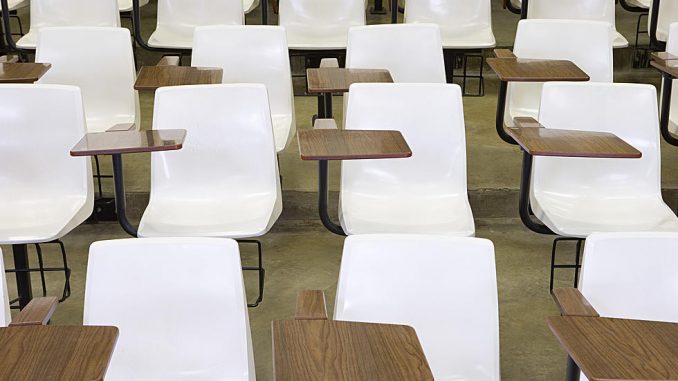
Zarina Sotero, Staff Writer |
On March 11, Gov. Andrew Cuomo announced that beginning March 19, all classroom instruction across the SUNY and CUNY systems will transfer to a “distance learning” module in an attempt to reduce the spread of COVID-19. In turn, SUNY Oneonta’s spring break was extended an additional week to allow faculty members to convert their courses to online modalities. Oneonta’s credited classes will resume on Monday, March 23. Non-credit and other courses such as “minis” (one credit course work that had yet to begin), however, have been dropped for the remainder of the semester.
The SUNY Oneonta administrative team has given faculty certain responsibilities that they must abide by following the conversion to distance learning. Instructors are expected to maintain current learning outcomes, maintain course grading structure and maintain contact hours for credit. This means that instructors cannot substantially change their syllabi or grading schema, –– they are only allowed to make slight adjustments to the class schedule and assignments.
Instructors are also expected to provide their students with coursework to complete at home that is equivalent to the amount of time students would have to spend in face-to-face classes. Furthermore, instructors are not allowed to shift to Pass/Fail standards of grading, end class prematurely by grading students based on work completed thus far or award all students a passing grade based on extraordinary circumstances.
Provost Kahanov has told faculty members that all courses need alternative modes of delivery. Instructors were advised to prepare for fully alternative course delivery due to the situation changing so rapidly. Instructors may choose whether they want their courses to be taught synchronously or asynchronously. A synchronous format dictates that the course will be taught at the same scheduled times. For example, if a course meets Tuesdays and Thursdays at 10 a.m., a synchronous alternative format will follow those times. Whereas an asynchronous alternative format allows individual students to complete course material on their own time. In addition to the online distribution of courses, some instructors are incorporating conferencing tools such as Zoom, Blackboard Collaborate and Microsoft Teams.
Many students have expressed concerns as to how hands-on courses, such as labs, will be converted into an alternative format. Initially, Governor Cuomo stated that such courses would be an exception to the new distance learning model, but due to the rapid changing escalation of the situation, hands-on courses will now also be converted to an alternative mode of delivery.
After speaking to several students in the chemistry department, it seems as though instructors are still trying to figure out how to best model and redesign their labs into equally effective, alternative formats. Some instructors are choosing to record the labs, providing students with information to complete pre-labs and lab reports, while others are choosing to go in entirely different directions. If you are unaware as to how your hands-on course is going to be delivered online, please contact your respective instructors via email.
Despite the move to distance learning, instructors are being encouraged to continue all aspects of academic work. This includes office hours, department and school responsibilities, shared governance, administrative committees and other academic priorities. In a time of unexpected stress for all, our instructors are doing the best they can to ensure we, as students, can continue learning and make the most of our education.
Leave a Reply